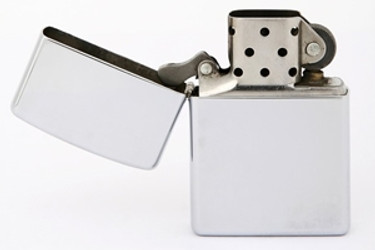It seems as though the Zippo lighter has been a mainstay of American popular culture forever. And in a sense, that's true for most people, since there are few alive today who were born before Zippos were introduced to the market a hundred years ago. In this post, we're going to take a look at the history of the Zippo and why it has long been one of the must-have tobacco pipe accessories for so many people.
A Short History of The Zippo Lighter
The Zippo Manufacturing Company was founded in 1932 with the first lighter finding its way to store shelves a year later. The company founder, George G. Baisdell, was granted a patent for his lighter on March 3, 1936, and while initial sales were decent it wasn’t until the advent of the Second World War that the Zippo really took off in terms of popularity.
Once America entered the war after the attack on Pearl Harbor Zippo ceased production of lighters for ordinary consumer markets and began producing lighters strictly for members of the US military. The strategy paid off big time because millions of servicemen were suddenly able to buy Zippos at PX and BX stores and carried them along with the rest of their equipment into battle in both Europe and the Pacific.
In the postwar years, smoking was not only tolerated, it was encouraged and many returning soldiers would not light their cigarettes, cigars or tobacco pipes with anything other than their beloved Zippos. Zippos became popular with advertisers and filmmakers for their distinctive look and the equally distinctive 'click' they produced when the lid was flipped shut.
During the 1960s a new generation of servicemen carried their Zippos into battle in the jungles of Southeast Asia during the Vietnam War. Many of them had their Zippos engraved with their unit info or popular sayings and those lighters have become sought-after items on the collectibles market.
Zippo Construction
All Zippo windproof lighters are made of brass, (with the exception of special limited edition lighters the company has produced over the years), and all are manufactured in the company’s Bradford, PA factory. The top of the lighter case has a distinctive convex shape to it. Inside are the windscreen chimney, the flint wheel and flint, the wick and the spring-toggle lever that works to keep the lid securely closed.
All of these works sit atop an open-bottom sleeve with cotton wadding inside that holds the lighter fluid. Lighter fluid is refilled by unscrewing and removing the sleeve and pouring the lighter fluid into the cotton-filled well.
The Zippo as Art Object
Mechanically the Zippo has remained basically unchanged over the past 90 years. But as they were adopted as the epitome of cool by various groups and successive generations they have also become icons of personal expression. Every imaginable type of graphic has been etched into the wide, flat sides of the Zippo from company logos to zodiac signs.
There have been countless collector’s editions of the lighter featuring everything from Art Deco designs to movie themes, playing card themes and limited editions marking various sales milestones for the company. The latest commemorative lighter was issued in 2020 and marked the sale of the 600 millionth Zippo. The bottom line is that Zippo lighters are more than tobacco pipe accessories, they are indispensable fixtures of American (and increasingly, world) popular culture.
Free Lifetime Maintenance
No Zippo owner has ever had to spend a dime on repairs or maintenance. That’s right. As it states on the company’s website: “It works or we fix it free™”. And they are serious about that. Whether your Zippo lighter is 1, 10 or 50 years old, if you're having a mechanical problem with it send it back to the company and they will repair it for free. Pretty amazing in this age when quality and customer service have become something of a bad joke.
Why So Many People with Tobacco Pipes Love Zippo Lighters
First of all, anyone with a taste for quality and an eye for classic American products is going to want a Zippo whether it's to light their tobacco pipe, their campfire or their bong. Zippos have the type of cultural panache enjoyed by precious few other items. So whether or not they are technically the ideal match for lighting a pipe is irrelevant.
Those who try to discredit the Zippo bring up the claim that they somehow negatively affect the flavor of the pipe tobacco. The fact is that while some have claimed this to be true countless others have been using Zippo lighters for years without experiencing any negative effects.
But just to show that they are always in tune with what their customers have to say, Zippo has created a modified version of their lighter fluid that is virtually odorless. So if there were any lingering naysayers about the smell produced by a Zippo they have been effectively silenced.
The Bottom Line
The Zippo lighter has long been a favorite of pipe smokers due to its beauty, reliability, the quality of its construction, and the immediate "cool" it imparts to its owner. And while they may seem unwieldy to the novice, with a little practice you can get a highly effective burn that will not in any way damage your tobacco pipes or foul your tobacco.
If you are in search of quality briar or meerschaum tobacco pipes or wholesale tobacco pipes get in touch with Paykoc Pipes at (888) 313-7137.

 US Dollars
US Dollars
